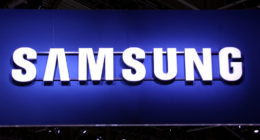Google has recently announced that it will partner with the Royal National Institute of Blind People and the Guardian to launch an online storytelling experience catered to blind and low vision readers.
The project is called Auditorial, and it features rich audio storytelling to help disabled people engage in content in a unique, creative way.
Users who are sensitive to hearing will be able to eliminate background noise to help them focus on the narrator while people who have photophobia, which makes them sensitive to light, can turn the story to dark mode and alter its animations; conversely, people with faded color vision can view the experience in an enhanced color mode. Lastly, people with motion sensitivity can flick a switch that turns moving images into keyframes.
“Accessibility is a major concern in modern website design,” says EWR Digital Web Design. “Today, websites should be ADA compliant, but many don’t make the necessary adjustments and updates to ensure people with different disabilities are able to access the information companies provide. More and more, we’re seeing a rise in businesses that come to us and want to be socially responsible, legally compliant, and all-inclusive.”
The Auditorial website went live March 20th to coincide with Global Accessibility Awareness Day, a worldwide event that started in 2012 to help raise awareness around digital accessibility. Immediately upon opening the webpage, the header reads “An experiment in storytelling that adapts to suit the reader.” It follows ecologist Bernie Krause as he describes his work tracking climate change by measuring sounds of natural habitats. It features expert editorial input from the U.K-based Guardian team and immersive visual and audio content.
Simple design features and accessibility functions can make all the difference to disabled individuals. Users who need assistive features like magnifiers, readers, or assistive touch struggle to access the same type of content that most people take for granted. To make your website ADA compliant means providing full and equal access.
While many business owners struggle to understand whether their website needs to be legally ADA compliant, it’s best to err on the side of caution. There is much grey area in terms of which types of businesses need it and which are exempt. As a general rule of thumb, commercial companies and medium sized businesses do require ADA compliance and several companies have been sued for their inability to comply (including major corporations like Domino’s Pizza and Carnival Cruise Lines).
Religious organizations and private clubs are exempt. Some parts of the American Disabilities Act also allow online exemptions for businesses with less than 15 employees, however, business owners should always opt for a compliance audit to see exactly where they fall with local and federal laws and regulations.
ADA compliance fills two primary objectives: they adhere to Web Content Accessibility Guidelines (WCAG 2.1 AA) conformance and have a published accessibility statement. Web Content Accessibility Guidelines define how to make websites accessible to people with disabilities. This checklist guides you through the compliance process to ensure webmasters are following necessary protocol.
A public accessibility statement is a page that communicates your accessibility goals and organization processes. It also serves as a mission statement to demonstrate your commitment to an equal and inclusive website experience.
“Auditorial is an example of how accessible online storytelling can be rich and engaging for everyone,” says David Clarke, Director of Services for RNIB. “By using simple accessibility functions and design features, the website proves that inclusive design doesn’t have to limit creativity.”



